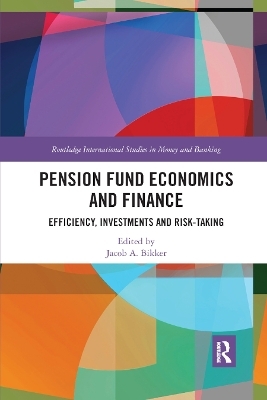
Pension Fund Economics and Finance
Routledge (Verlag)
978-0-367-87775-0 (ISBN)
Pension fund benefits are crucial for pensioners’ welfare and pension fund savings have accumulated to huge amounts, covering a major part of world-wide institutional investments. However, the literature on pension fund economics and finance is rather limited, caused, in part, to limited data availability. This book contributes to this literature and focuses on three important areas. The first is pension fund (in)efficiency, which has a huge impact on final benefits, particularly when annual spoilage accumulates over a lifetime. Scale economies, pension plans complexity and alternative pension saving plans are important issues.
The second area is investment behavior and risk-taking. A key question refers to the allocation of investments over high risk/high return and relatively safe assets. Bikker investigates whether pension funds follow the life-cycle hypothesis: more risk and return for pension funds with young participants. Many pension funds are rather limited in size, which may raise the question how financially sophisticated the pension fund decision makers are: rather professionals or closer to unskilled private persons?
The third field concerns two regulation issues. How do pension fund respond to shocks such as unexpected investment returns or changes in life expectancy? What are the welfare implications to the beneficiary for different methods of securing pension funding: solvency requirements, a pension guarantee fund, or sponsor support?
This groundbreaking book will challenge the way pension fund economics is thought about and practiced.
Jacob Bikker is professor of Banking and Financial Regulation, School of Economics, Utrecht University, Netherlands and senior researcher at the Strategy Department, Supervisory Policy Division, De Nederlandsche Bank (DNB). His research interests include financial institutions, competition, efficiency and optimal scale. He has published many papers on efficiency and optimal scale of pension funds in journals such as Journal of Pension Economics and Finance, Journal of Risk and Insurance, and Applied Economics.
Table of Contents
Introduction, J.A. Bikker
Part 1: Efficiency
Is there an optimal pension fund size? A scale-economy analysis of administrative and investment costs, J.A. Bikker,
The impact of scale, complexity, and service quality on the costs of pension funds: A cross-country comparison, J.A. Bikker, O.W. Steenbeek, F. Torracchi
Cost differences between pension funds and life insurers in providing pensions, J.A. Bikker
Part 2: Investments behavior and risk-taking
The eligibility of emerging market bonds for pension fund portfolios, L. Spierdijk and Z. Umar.
Mean reversion of stock prices and its impact on pension fund investment policies, L. Spierdijk, J.A. Bikker.
Pension fund investment policy, risk taking, ageing and the life cycle hypothesis, J.A. Bikker, D. Broeders, D. Hollanders, E. Ponds,
Investor sophistication and risk taking, J. de Dreu, J.A. Bikker.
Investment risk-taking of institutional investors, J.K. Gorter, J.A Bikker.
Part 3: Risk-taking and regulation
Measuring and explaining implicit risk sharing in defined benefit pension funds, J.A. Bikker, T. Knaap, W. Romp,
(11) Utility-equivalence of pension security mechanisms, D.W.G.A. Broeders, An Chen, and Birgit Schnorrenberg
| Erscheinungsdatum | 16.12.2019 |
|---|---|
| Reihe/Serie | Routledge International Studies in Money and Banking |
| Verlagsort | London |
| Sprache | englisch |
| Maße | 156 x 234 mm |
| Gewicht | 453 g |
| Themenwelt | Wirtschaft ► Betriebswirtschaft / Management ► Finanzierung |
| Wirtschaft ► Volkswirtschaftslehre ► Mikroökonomie | |
| ISBN-10 | 0-367-87775-9 / 0367877759 |
| ISBN-13 | 978-0-367-87775-0 / 9780367877750 |
| Zustand | Neuware |
| Haben Sie eine Frage zum Produkt? |
aus dem Bereich


